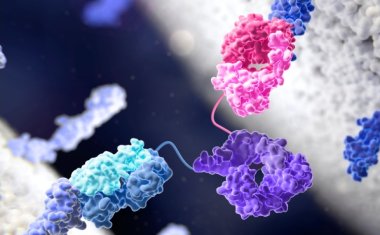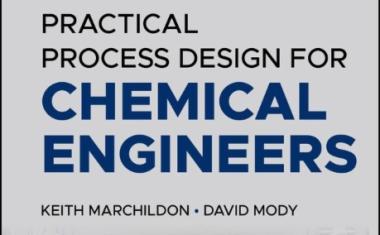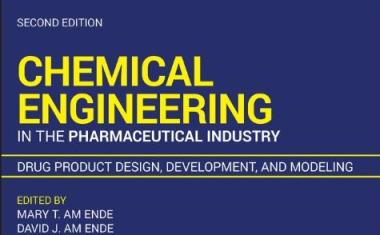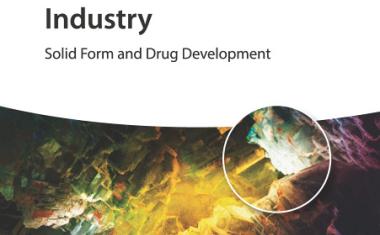Transforming the Pharmaceutical Supply Chain - Interview

Interview with Hedley Rees, author of Transforming the Pharmaceutical Supply Chain.
Biologics and advanced therapies are changing the pharmaceutical landscape. How does your book guide supply chain adaptation for these new types of drugs?
Hedley Rees: The infrastructure for the production and distribution of drugs (small-molecule products) was established well before biologics and advanced therapies arrived on the scene.
The supply chain challenge for these new types of drugs is that they are derived from living organisms, typically animal and human cells. As such, biologic products must be kept within a defined temperature range at all stages of manufacture, storage, and distribution. To do that, they require special packaging and monitoring through the supply chain journey. Excursion(s) outside the defined range could lead to rejection of the product.
The other complication is described by the industry mantra “the process is the product.” This means that a different process can lead to clinically different products, even though the intention was to produce a ‘similar’ product. This is down to the unpredictability of a biologic product’s reaction to different processing equipment and handing.
For advanced therapies being developed today, many are patient-specific (autologous) as well as being biologics. This brings another layer of complexity that must be managed with extreme care to avoid patient harm.
Solutions to surmount these challenges are presented in the book, based on reduction of system complexity, stronger linkages between the healthcare and production supply chain, and skills in quality management systems (QMSs) being introduced into the hospital setting.
Over your 25 years of experience in biotech supply chains, what patterns or lessons shaped the content of this book?
H. Rees: By far the most noticeable pattern has been the industry’s pivot from vertical integration in the supply chain, to fully outsourced business models. In so doing, the previous large pharmaceutical companies became wholly dependent on third-party organizations for their product development and commercialization activities.
In consequence, the reduced integration between the parties, led to the valley of death—failure to bring follow-on products to market on expiry of existing product patents. Investors and the pharmaceutical press dubbed this phenomenon the patent cliff. This is by far the most significant pattern that has run through the pharmaceutical and biotech sectors over the last four decades.
The learning shared in the book aims to facilitate greater levels of integration in key areas, and between interfaces, in today’s pharmaceutical supply chain. Big Picture Maps of the before and after supply chain and industry structure are included to provide visual representation of the degree of improvement that could be achieved.
How can companies use the insights from this book to prevent system breakdowns and deliver better patient outcomes?
H. Rees: Considering patient outcomes first, the book details a new paradigm in drug and biologics development, based on a clinician-centered model. So, instead of discovery research teams selecting development candidates based on molecular modeling and target identification, we look toward clinicians’ observations in the areas in which they specialize.
This could be an important segue into developing medicines that are out of patent but not licensed for an indication in which it may show promise (drug repurposing). In this case, the development cost would be a fraction of a totally new molecular entity (NME). Other advantages of this approach are outlined in the book.
The topic of systems breakdown is covered in the book during a deep dive into Systems Thinking and Systems Practice. We discuss the relevance of understanding behaviors within socio-technical systems, drawing on the work of world experts such as Russel Ackoff, Bill Bellows, and Peter Checkland. Professor Michael Porter’s work on the value chain also features, along with the master of industrial systems practice (ISP) (a term coined in the book)—the incredible and sadly late, Steve Jobs, former CEO of Apple.
For professionals new to pharmaceutical supply chains, how would you explain the most critical challenges they need to understand?
H. Rees: The reduced integration of today’s pharmaceutical business models has introduced challenges in the core disciplines of supply chain management (SCM), which are detailed in the book—strategic procurement (SP), planning and inventory management (PIM), and transport logistics (TL).
These challenges tend to be more prevalent than found in non-pharmaceutical supply chains.
In terms of SP, sole sourcing and scarcity of specified materials are not uncommon, as are arms-length, contract-driven interactions, where opportunities for strategic relationships are foregone.
In respect of PIM, the globally disparate stages in the supply chain expose the risk of the bullwhip effect creating inflated inventories and/or supply shortages. In addition, accessing inventory and other data from contractors and suppliers can be problematic.
As for TL, the number of actors involved in the journey from raw materials to finished products is significantly greater than any other industrial sector. The globalization of clinical trials, along with the increased volume of trials being undertaken, has become a major challenge for clinical trial sponsors.
This, therefore, leaves scope for those outside the industry wishing to transition in, opportunities to join in a radical transformation of the pharmaceutical supply chain.
















